Introduction
How Long Do Skinny Pigs Live: Skinny pigs, also known as hairless guinea pigs, have garnered attention in recent years due to their unique appearance and charming personalities. One common question among prospective owners and curious enthusiasts. This intriguing query delves into the lifespan of these extraordinary pets, which, much like their furry counterparts, can bring joy and companionship to many households.
The lifespan of a skinny pig, much like any other guinea pig breed, is influenced by various factors. On average, these endearing creatures can live anywhere from 5 to 7 years, with some fortunate individuals reaching the upper end of that range. However, just like humans, genetics, diet, and overall care play pivotal roles in determining their longevity. Thus, providing optimal living conditions and proper care is essential in ensuring a skinny pig’s full potential lifespan.
The lifespan of skinny pigs, we’ll delve deeper into the factors that can influence their longevity, from genetics and diet to their unique needs and the importance of a loving, nurturing environment. Understanding these aspects will help you provide the best possible care for your skinny pig and ensure they live a happy and healthy life.
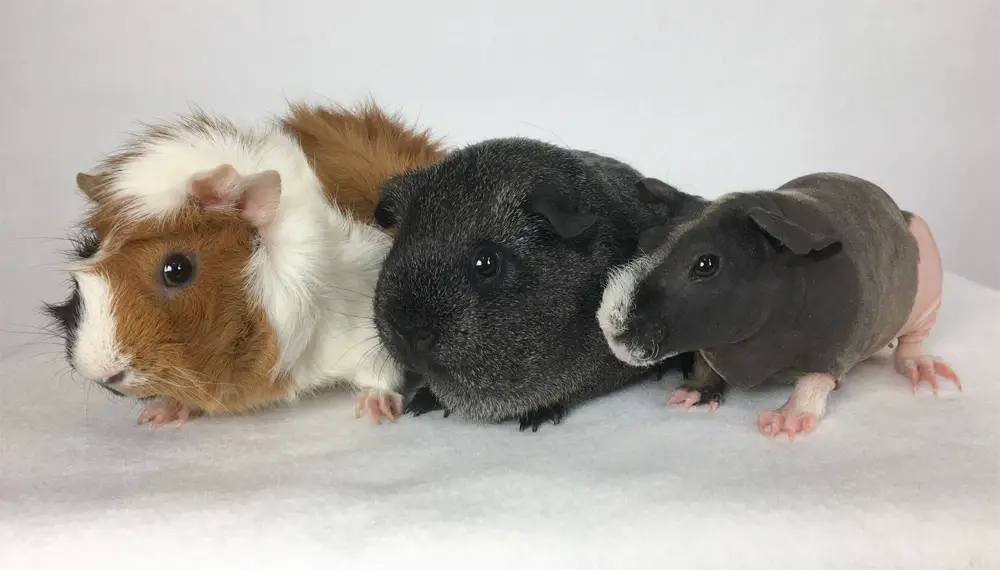
Do skinny pigs have health problems?
You should be aware that skinny pigs can have health problems related to their lack of hair, such as skin problems. They are also a little more expensive than typical guinea pigs and other small pets.
Skinny pigs, also known as hairless guinea pigs, are a unique and relatively rare breed of domesticated guinea pigs. Due to their lack of fur, they have some distinctive characteristics and potential health considerations.
Skin Sensitivity
One of the most noticeable traits of skinny pigs is their hairless skin. While their lack of fur can make them more susceptible to environmental factors like temperature changes and UV radiation, it can also lead to skin sensitivity. Without fur to protect their skin, skinny pigs are prone to skin issues, including dryness, irritation, and sunburn. To mitigate these problems, owners of skinny pigs must take extra precautions by providing adequate shelter, keeping them out of direct sunlight, and moisturizing their skin as needed.
Temperature Regulation
Maintaining proper body temperature is crucial for all guinea pigs, but it can be especially challenging for skinny pigs due to their lack of insulation from fur. Skinny pigs are more susceptible to temperature extremes, both hot and cold. They must be kept in a climate-controlled environment to prevent overheating during hot weather and hypothermia during colder months. Providing them with warm bedding, heat lamps, or sweaters can help regulate their body temperature and keep them comfortable.
Dietary Considerations
Like all guinea pigs, skinny pigs require a balanced diet to stay healthy. However, their lack of fur means they may lose body heat more readily, which can increase their energy requirements. Owners should pay special attention to their skinny pigs’ dietary needs, ensuring they receive enough high-quality guinea pig pellets, fresh vegetables, and hay to maintain their weight and health. Monitoring their weight and overall condition is essential to ensure they are thriving.
Do hairless guinea pigs have health problems?
If the furless pigs lie in a damp environment, they’re likely to get skin infections and even fungus. Bottom line: our cute hairless guinea pigs need extra food, extra cleaning, and the coziest bedding!
Hairless guinea pigs, often referred to as “skinny pigs” or “Baldwin guinea pigs,” are a unique breed known for their lack of fur. While these hairless guinea pigs are generally healthy and can live long, happy lives, they do have some specific health considerations that potential owners should be aware of.
Firstly, hairless guinea pigs are more susceptible to skin issues compared to their furry counterparts. Without the protective layer of fur, their skin is exposed to potential irritants, temperature fluctuations, and injuries. Owners of hairless guinea pigs need to be vigilant in maintaining a clean and safe environment for their pets. Regular bathing and moisturizing with specialized guinea pig-safe products can help keep their skin healthy and prevent dryness or skin conditions. Additionally, these guinea pigs should be protected from direct sunlight, as their lack of fur makes them prone to sunburn. Providing shade and limiting outdoor exposure during hot, sunny days is essential.
Hairless guinea pigs are also more vulnerable to temperature changes. Due to their lack of fur, they have difficulty regulating their body temperature and are more prone to both heat stress and cold. Owners should keep their skinny pigs in a climate-controlled environment, ensuring that temperatures remain within a comfortable range. In colder months, it’s advisable to provide them with extra bedding and a warm, cozy hiding place to help maintain their body heat. Conversely, during hot weather, owners should take precautions to keep them cool, such as providing access to a fan or air conditioning and offering frozen water bottles for them to lean against.
Another health consideration for hairless guinea pigs is their potential for injury. Without fur to protect them, they are more susceptible to cuts, scratches, and bruises. Owners should be cautious when handling them, keeping their nails trimmed to prevent accidental scratching. Providing a soft bedding material in their cage can also help reduce the risk of skin abrasions and injuries.
Do skinny pigs need to be in pairs?
Guinea pigs are very sociable creatures and need to live in pairs or small groups, as they would in the wild. We recommend always having two or more guinea pigs together, with safe introductions to keep them happy. Our guinea pigs need other guinea pigs.
Skinny pigs, also known as skinny pigs or hairless guinea pigs, are a unique and exotic breed of guinea pigs known for their hairless appearance. They have a distinct look with only a small amount of fuzz on their noses and feet, making them stand out from other guinea pig breeds. When it comes to their social and companionship needs, whether skinny pigs need to be in pairs or solitary depends on several factors.
Social Nature of Skinny Pigs
Skinny pigs, like their furry counterparts, are social animals by nature. In the wild, guinea pigs are known to live in groups or herds, providing them with social interaction, grooming, and a sense of security. Similarly, skinny pigs benefit from companionship. When kept alone, they can become lonely, stressed, and even depressed. Interaction with another skinny pig or a compatible guinea pig breed can help alleviate these issues and ensure a happier, healthier pet.
Pairing Skinny Pigs
Pairing skinny pigs is often recommended to meet their social needs. Ideally, it’s best to keep them with another skinny pig or a guinea pig of a compatible breed and temperament. When introducing a new skinny pig to an existing one, it’s essential to follow a proper introduction process to minimize stress and potential conflicts. Ensure that the cage is spacious enough to accommodate both pigs comfortably, with separate hiding spots to reduce territorial disputes.
Exceptions and Individual Needs
While the general advice is to keep skinny pigs in pairs or small groups for their well-being, there can be exceptions. Some skinny pigs may display aggressive or dominant behaviors that make it challenging to pair them with others. In such cases, consulting with a veterinarian or an experienced guinea pig owner can provide guidance on the best course of action. Additionally, if you’re unable to find a suitable companion, providing your skinny pig with ample attention, toys, and mental stimulation can help mitigate the effects of loneliness.
Do skinny pigs get big?
Hairless guinea pigs, also known as skinny pigs, are very similar to their furry relatives. A fully grown adult will weigh an average of 1-2 lbs and be up to 12 inches long. Their lifespan is 5-7 years in domestic settings. Despite their name, hairless guinea pigs do have some hair on their muzzle, back, and legs.
Skinny pigs, a unique and unusual breed of guinea pigs, are known for their distinctive appearance, characterized by almost no fur or hair. Their lack of fur often prompts questions about their growth and size potential. So, do skinny pigs get big?
Genetics and Growth Potential
Skinny pigs, also known as “skinny pigs” or “hairless guinea pigs,” are not naturally large rodents. Their size is primarily determined by genetics, just like any other guinea pig breed. While skinny pigs may appear smaller compared to their furry counterparts due to their lack of fur, their body size, including their length and width, is similar. Like all guinea pigs, they typically reach their adult size within the first year of life, which is usually around 8 to 12 inches (20 to 30 centimeters) in length and weighing between 1.5 to 2.6 pounds (0.68 to 1.18 kilograms).
Feeding and Care
Skinny pigs require the same level of care and nutrition as any other guinea pig breed. Their growth and overall health depend on a balanced diet, proper housing, and regular veterinary check-ups. Providing them with high-quality guinea pig pellets, fresh vegetables, hay, and clean water is essential to ensure they reach their appropriate size and maintain good health. Malnutrition or neglect can result in stunted growth, regardless of the guinea pig’s breed or coat type.
Health Considerations
While skinny pigs have unique grooming requirements due to their lack of fur, their size and growth are not substantially different from other guinea pig breeds. However, it’s essential to pay close attention to their skin health, as their exposed skin can be more vulnerable to skin conditions and sunburn. Skinny pigs should be kept indoors or in a shaded area when outside to protect their sensitive skin. Regularly applying pet-safe sunscreen can also help prevent skin issues.
How long do skinny pigs last?
7-8 years
The hairless breed, called the skinny guinea pig, has an average lifespan of 7-8 years, while some guinea pigs with longer hair only average 4 years.
Skinny pigs, also known as “hairless guinea pigs,” are a unique and relatively rare breed of guinea pigs known for their lack of fur. These small rodents make for popular pets due to their distinctive appearance and friendly nature. Like all pets, the lifespan of skinny pigs can vary based on several factors.
Average Lifespan
Skinny pigs, on average, have a lifespan of about 5 to 7 years. However, this is a general estimate and can be influenced by factors such as genetics, diet, environment, and healthcare. Some skinny pigs may live slightly shorter or longer lives depending on their individual circumstances.
Genetics
Genetics can play a significant role in determining a skinny pig’s lifespan. Some genetic conditions or predispositions may affect their health and longevity. Responsible breeding practices and obtaining a skinny pig from a reputable breeder can help reduce the risk of genetic-related health issues.
Care and Environment
The care and environment provided to a skinny pig can greatly impact its lifespan. Proper nutrition, clean living conditions, and regular veterinary check-ups are essential for ensuring the health and well-being of these pets. Additionally, ensuring that they are protected from extreme temperatures and have adequate social interaction can contribute to a longer and happier life.
Do skinny pigs bite?
Any animal with a mouth can bite. However, guinea pigs have a naturally calm demeanor and don’t tend to bite unless they need your attention. Rest assured, guinea pigs make fabulous pets and aren’t likely to bite during gentle play.
Understanding Skinny Pig Behavior
Skinny pigs, also known as hairless guinea pigs, are a unique and distinctive breed of guinea pig that have gained popularity among pet enthusiasts for their unusual appearance. These small creatures are characterized by their hairlessness, with only a thin layer of fuzz or hair on their noses, feet, and sometimes their backs. One common question that prospective skinny pig owners often ask is whether these peculiar pets have a tendency to bite. To address this query, it’s crucial to understand the behavior of skinny pigs and whether biting is a common trait among them.
The Nature of Skinny Pig Biting
Like all animals, skinny pigs have individual personalities, and their behavior can vary from one pig to another. Generally, skinny pigs are known for their gentle and sociable nature. They are often described as friendly and affectionate pets, making them suitable companions for families and individuals alike. Unlike some other small rodents, such as hamsters, which may nip or bite when startled or threatened, skinny pigs are less likely to exhibit aggressive behavior.
Skinny pigs are naturally curious creatures, and they may nibble or explore objects, including your fingers, as a way to investigate their surroundings. However, this nibbling is typically not harmful or aggressive in nature. Skinny pigs do not have sharp teeth designed for biting or tearing. Their teeth are adapted for grinding, as they primarily feed on hay and vegetables. While an occasional nibble may occur during their exploration, it is seldom painful and is not intended as an act of aggression.
Preventing Nipping and Ensuring a Positive Bond
To minimize the chances of any nibbling behavior, it is essential to provide your skinny pig with a secure and comfortable living environment. This includes a spacious cage with appropriate bedding, fresh food and water, and social interaction. Interacting with your skinny pig regularly, offering treats, and handling them gently can help build trust and strengthen your bond, reducing any inclination for them to nibble during handling.
Do skinny pigs smell?
In a nutshell, guinea pigs shouldn’t smell. If they are giving off an unpleasant odor, it’s usually a sign that the cage isn’t clean, their diet is wrong, they’re sick, or they’re struggling to groom themselves. Also, boars may smell more than sows because of an oily buildup around the grease gland.
Skinny pigs, a breed of hairless guinea pigs, are known for their unique appearance and lack of fur. One common question that potential owners often ask is whether skinny pigs smell more or differently than their furry counterparts. In general, skinny pigs do not inherently smell worse than regular guinea pigs. Like all pets, their odor is primarily influenced by their hygiene, diet, and the cleanliness of their living environment.
Maintaining good hygiene practices is crucial when caring for skinny pigs. Due to their lack of fur, they may require more frequent baths to remove excess oils and debris from their skin. Using a mild, scent-free shampoo designed for small animals can help keep them clean without exacerbating any potential odor issues. Regularly cleaning their cages and providing fresh bedding will also contribute to a more pleasant-smelling living space.
A skinny pig’s diet plays a significant role in how they smell. Feeding them a balanced diet rich in fresh vegetables and high-quality guinea pig pellets can help reduce any potential body odor. Avoid overfeeding and provide fresh water at all times. Remember that each skinny pig has its unique scent, and while they may have a faint odor compared to furry guinea pigs, it is usually not strong or offensive when proper care and hygiene practices are followed.
Can skinny pigs live alone?
As we have already mentioned, guinea pigs are social animals and need to be with other guinea pigs. Without a piggy friend, a single guinea pig is likely to develop physical, mental and behavioral issues.
Social Nature of Skinny Pigs
Skinny pigs, a breed of hairless guinea pigs, are known for their social and friendly nature. In the wild, guinea pigs are herd animals that thrive in the company of their own kind. Similarly, skinny pigs also benefit from social interaction. While they can technically live alone, it’s not ideal for their overall well-being.
The Importance of Companionship
Providing a skinny pig with a companion, preferably another skinny pig or a regular guinea pig, is highly recommended. These small rodents enjoy socializing, grooming each other, and engaging in playtime. Companionship helps combat loneliness and can alleviate stress, which can negatively affect their health if left unaddressed.
Considerations for Solo Living
If you must keep a skinny pig alone due to certain circumstances, you should be prepared to devote extra time and attention to the solo pet. Interacting with them, providing mental stimulation, and ensuring they have plenty of toys and activities can help compensate for the absence of a furry friend. However, the best way to ensure a happy and healthy life for a skinny pig is to house them with a compatible companion whenever possible.
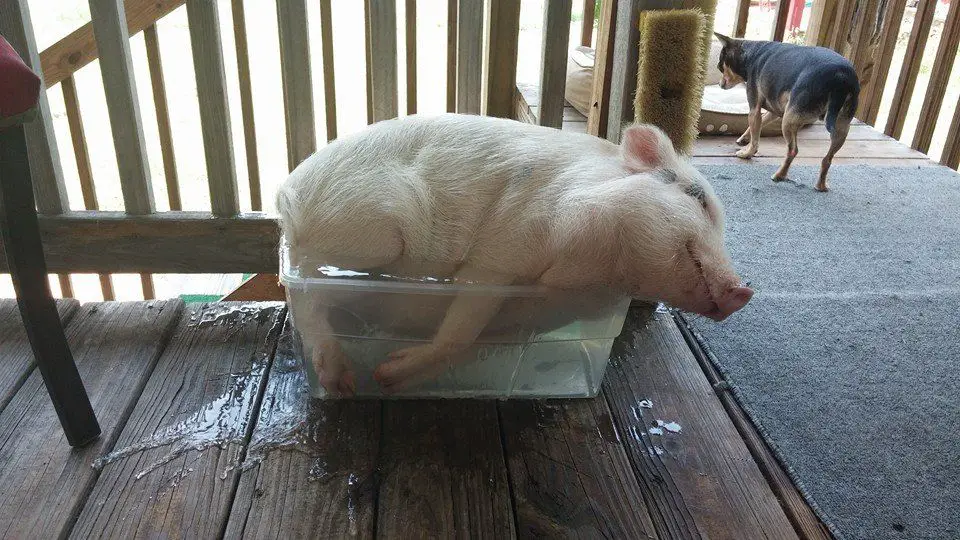
Conclusion
Understanding the lifespan of Skinny Pigs is crucial for anyone considering these unique and charming pets. These hairless guinea pigs have captured the hearts of many with their distinctive appearance and endearing personalities. Their average lifespan ranges from 5 to 8 years, but with proper care and attention to their specific needs, they can potentially live even longer.
First ,diet plays a significant role in the longevity of Skinny guinea Pigs. Providing them with a balanced diet rich in fresh vegetables, high-quality pell and vitamin C is essential. Guinea pigs, in general, cannot synthesize vitamin C, so ensuring they receive an adequate amount of this nutrient is vital for their overall health and longevity. Routine visits to an experienced exotic pet veterinarian can help identify and address any health issues early on, ensuring prompt treatment and a longer, healthier life for your Skinny Pig.
Additionally, maintaining a clean and hygienic living environment is crucial. Skinny Pigs are more susceptible to skin issues due to their lack of fur, so regular cage cleaning and bathing are necessary to prevent skin infections and mites. Proper socialization and mental stimulation are also essential components of their care, as these factors can impact their overall well-being and lifespan. Regular veterinary check-ups should not be overlooked.

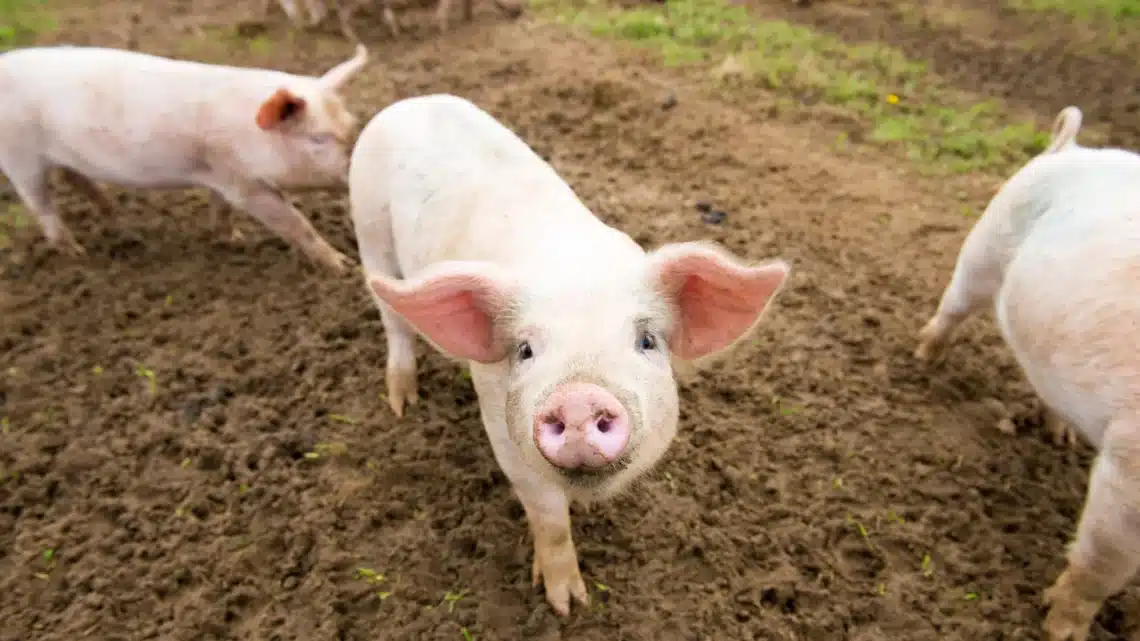
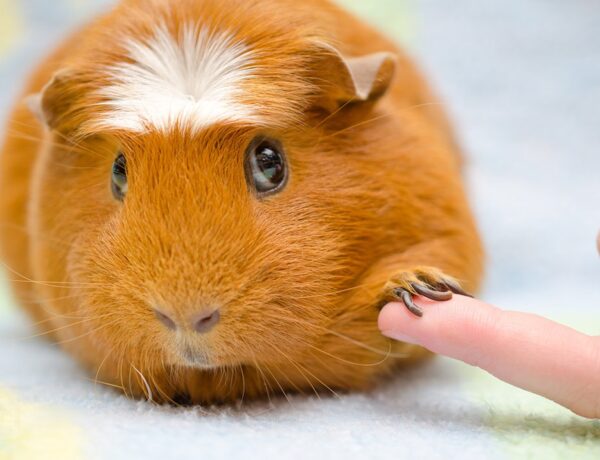

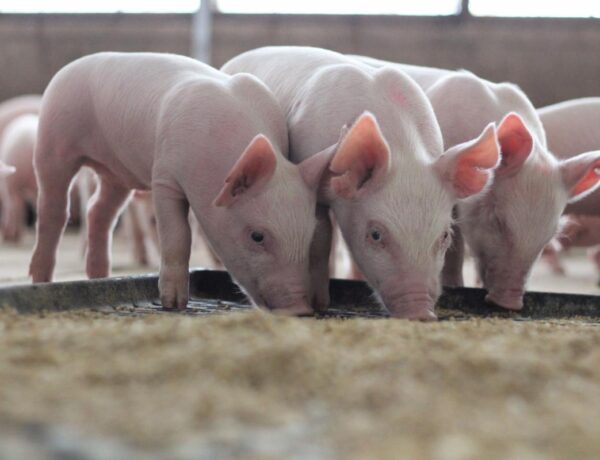
No Comments